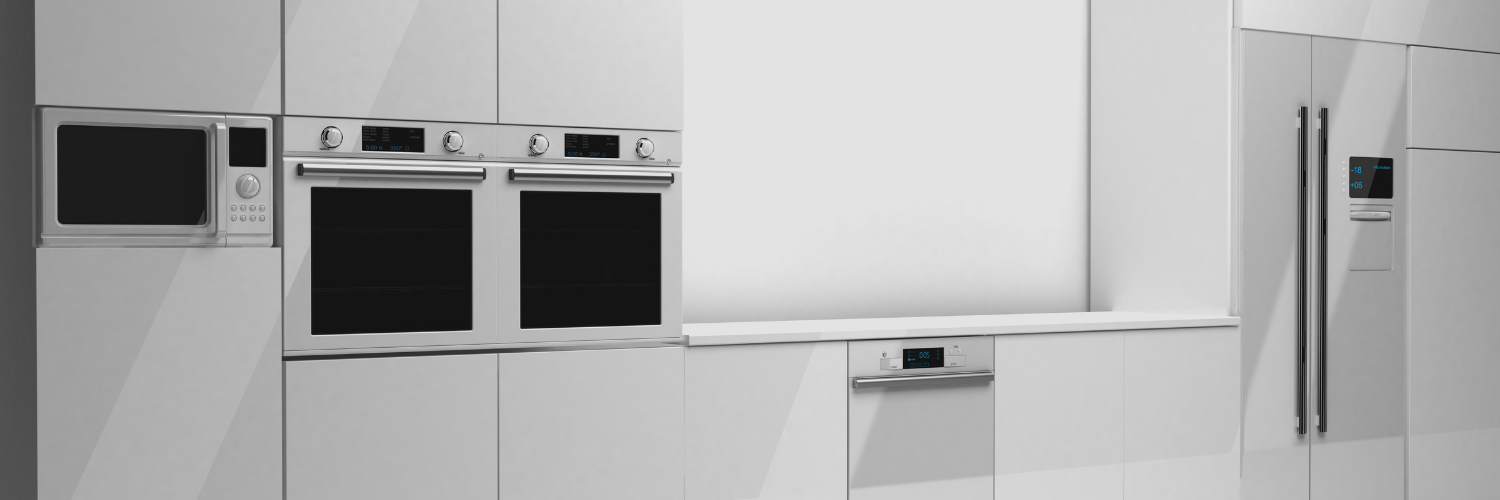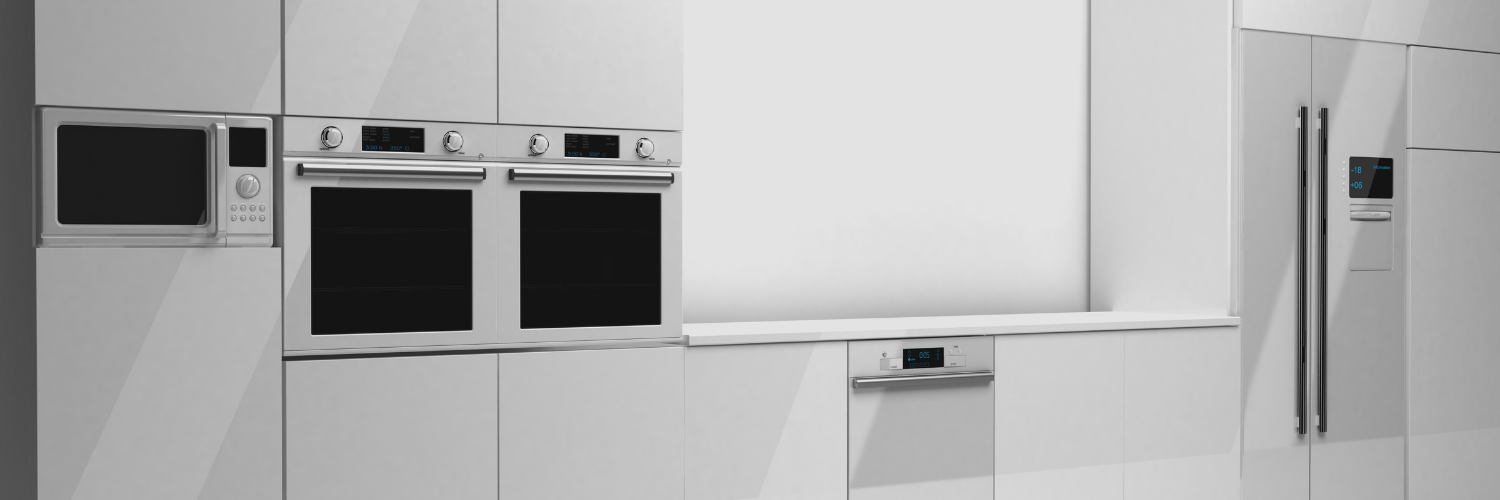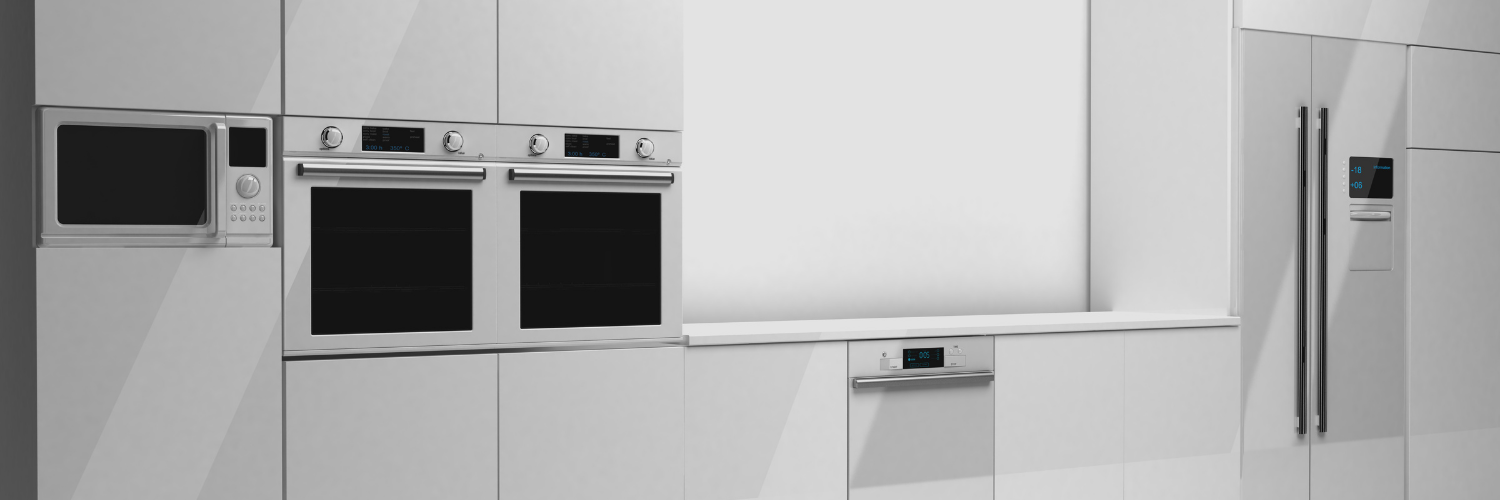How to Drain Bosch Dishwasher
A Guide by Appliance Repair Pros Kitchener
Ensuring your Bosch dishwasher drains properly is essential for maintaining its efficiency and longevity. In this guide, you will learn the steps necessary to effectively drain your Bosch dishwasher and tackle any drainage issues that may arise. Whether you're dealing with standing water or a malfunctioning drain pump, understanding how to resolve these concerns can make a significant difference.
Before diving into the draining process, it's crucial to equip yourself with the right tools and knowledge to ensure safety and efficiency. From troubleshooting common drainage problems to following a step-by-step guide, this blog will provide you with comprehensive insights to address your dishwasher's needs confidently.
With the right approach, you can keep your Bosch dishwasher in optimal working condition and prevent future drainage complications. Read on to gain valuable information that will empower you to handle any drainage scenarios effectively.
Key Takeaways
- Understanding how to properly drain your Bosch dishwasher enhances its performance.
- Implementing preventive measures can help avoid future drainage issues.
- Knowing when to seek professional help is crucial for effective repairs.
Understanding Your Bosch Dishwasher
Your Bosch dishwasher is designed for efficiency and performance. Familiarizing yourself with its components can help you maintain and troubleshoot it effectively.
Key Components:
- Drain Hose: Connects the dishwasher to the household drainage system.
- Filter: Catches food particles and debris, preventing clogs.
- Spray Arms: Distribute water for cleaning dishes.
Common Functions:
- Washing Cycles: Various settings are available for different load types.
- Drainage System: Critical for removing wastewater after cleaning.
- Control Panel: Allows you to select settings and monitor cycles.
While Bosch dishwashers are known for their reliability, issues can arise. Understanding how the drainage system works is crucial. A clogged drain can disrupt your appliance's operation, leading to standing water.
Maintenance Tips:
- Regularly clean the filter to prevent blockages.
- Inspect the drain hose for kinks or blockages.
- Ensure the area around the dishwasher is clear to allow proper airflow.
By knowing these elements, you can take proactive steps to ensure your dishwasher operates smoothly. With this knowledge, you’re better prepared to handle any issues that may arise during use.
Safety Precautions Before Starting
Before you begin draining your Bosch dishwasher, safety should be your top priority. Following these precautions will help you avoid accidents.
- Disconnect Power: Always unplug the dishwasher or turn off the circuit breaker. This prevents any electrical hazards while you work.
- Shut Off Water Supply: Locate and turn off the water supply to avoid leaks or spills during the draining process.
- Protective Gear: Wear gloves and safety glasses. This protects your hands and eyes from sharp objects or any debris in the dishwasher.
- Keep the Area Dry: Ensure the floor around the dishwasher is dry to prevent slips. Water can accumulate during the draining process.
- Use Proper Tools: Have the necessary tools ready before starting. This includes a towel or sponge, a bucket, and any other tools recommended for your specific model.
- Check for Blockages: Before draining, inspect the drain filter and hose for any visible blockages. This helps you identify any additional issues.
By taking these safety measures, you'll create a safer environment for yourself as you proceed with draining your Bosch dishwasher.
Tools and Materials Needed for Draining
To effectively drain your Bosch dishwasher, gather the following tools and materials:
- Bucket or Bowl: This will collect any excess water from the dishwasher.
- Towels or Mop: Use these for cleaning up any spills or leaks that may occur during the process.
- Soft Sponge or Cloth: Necessary for wiping down surfaces inside the dishwasher after draining.
- Wrench: This tool is helpful for loosening the drain hose connection if needed.
- Gloves: Protect your hands from water and potential debris when handling the drainage process.
Before you begin, ensure you have everything ready. This will help you avoid interruptions and delays.
Additionally, if you suspect a clog, consider having a pair of pliers on hand. They can assist you in detaching hoses if blockages need to be addressed.
By gathering these items ahead of time, you can streamline the draining process and address any issues with your dishwasher more effectively.
Troubleshooting Common Drainage Issues
When your Bosch dishwasher fails to drain properly, identifying the problem can save you time and prevent further issues. This section covers key areas to check, ensuring you understand common drainage issues and how to address them effectively.
Identifying Drainage Problems
Begin by recognizing the signs that indicate drainage issues. You might notice standing water at the bottom of the dishwasher after a cycle. This can suggest a malfunction with the drain pump or an obstruction preventing water from exiting.
Listen for unusual noises, such as grinding or humming, which may indicate a problem with the drain pump motor. If you see error codes displayed on your machine, refer to the manual for specific diagnostic information.
Regular checks can help you catch problems early, saving you from more complex repairs down the line.
Checking for Clogs and Blockages
Clogs are a common issue with dishwashers. Check the spray arms first; remove them and inspect for food particles or debris that could block water flow. Clean any obstructions with warm soapy water.
Inspect the interior drains as well. Remove the cover on the dishwasher floor to access the drain area. Clear away any visible debris that may impede water flow. You may also use a flashlight to ensure all paths are clear and unobstructed.
Cleaning these parts regularly can enhance performance and extend the lifespan of your appliance.
Inspecting the Drain Hose
The drain hose connects your dishwasher to the household plumbing. Start by inspecting it for kinks, bends, or any signs of damage that could disrupt drainage.
Ensure that the hose is installed correctly, typically at a height to prevent backflow. A good practice is to make sure it’s elevated and secured in place. Disconnect the hose for a closer inspection if necessary.
Run water through the hose using a garden hose to ensure no blockages are present. If you find any punctures or cracks, replacing the hose may be necessary to restore proper drainage.
Evaluating the Dishwasher Filter
The filter is essential for trapping food particles and debris to prevent them from clogging the drainage system. Consult your user manual to locate and remove the filter, usually located at the bottom of the appliance.
Rinse the filter under warm water, using a soft brush to remove stubborn residue. Ensure that it’s free of buildup, as a clogged filter can significantly hinder drainage performance.
After cleaning, reinsert the filter securely and run a test cycle to confirm that the drainage issue is resolved. Regular maintenance of the filter is crucial for optimal function.
Step-by-Step Draining Process
Draining your Bosch dishwasher effectively requires careful preparation and attention to detail. Follow these steps to ensure that your appliance is emptied properly and that any potential drainage issues are addressed.
Preparing the Dishwasher
Begin by ensuring your safety. Disconnect the power supply by unplugging the dishwasher or turning off the circuit breaker. This prevents any electrical hazards during the process.
Next, remove any items from inside the dishwasher, such as plates, utensils, or any remaining food debris. This step is crucial as it allows for unhindered access to the drainage area.
Lastly, check the owner's manual for any specific instructions related to your model. This will give you a clear idea of particular components that may need attention before proceeding.
Removing Standing Water
After preparation, locate any standing water at the bottom of the dishwasher. You can use a sponge or a shallow bowl to scoop this water out.
Tip: Using a wet/dry vacuum can speed up this process significantly.
Ensure you remove as much water as possible. Take care around the drain filter, as this area can harbour debris. If it's difficult to reach the water, you may need to remove the bottom spray arm or other components to gain better access.
Once the majority of the water is removed, check for any water still lingering near the drain. This step is vital to ensure that no water is left behind, which could lead to mold or odours.
Cleaning the Drainage System
With standing water removed, the next step is to clean the drainage system. Remove the drain filter and inspect it for any blockages. You can wash it with warm, soapy water to ensure it’s clear.
Inspect the drain hose for kinks or clogs. If necessary, detach the hose from the drain connection and flush it with hot water. This can help dislodge any remaining debris.
If the drain pump is accessible, check it for any blockages. Clear any obstructions carefully, as forcing them can damage the pump. Ensuring these components are clean is essential for optimal drainage performance.
Reassembling the Dishwasher Components
Once everything is cleaned, reassemble all components. Start by placing the drain filter back in its original position, ensuring it’s seated properly.
Reconnect the drain hose to maintain proper water flow during cycles. Ensure there are no bends or twists in the hose that could restrict drainage.
Finally, reconnect the power supply and run a short cycle without dishes to test your work. Monitor for any leaks or unusual noises. This step validates that your drainage process was successful and that the dishwasher functions correctly.
Post-Draining Checklist
After draining your Bosch dishwasher, it’s essential to ensure that everything is functioning correctly. This checklist will guide you through the necessary steps to confirm everything is in order.
Testing the Dishwasher
Before you return to your routine, you should test the dishwasher. Start by running a short cycle with a small load. This will help you confirm that the dishwasher fills and drains properly.
- Listen for Unusual Sounds: Pay attention to any unusual noises during operation.
- Verify Water Intake: Check that the water fills evenly and doesn’t leak.
- Monitor the Drainage: Ensure that the water drains completely by observing the final rinse.
If all goes well, your dishwasher is likely functioning as it should.
Looking for Leaks
Once testing is complete, inspect the dishwasher for any leaks. This is crucial to avoid future water damage.
- Check Hoses and Connections: Examine all hoses and connections for signs of leaks or loose fittings.
- Inspect the Base: Look under the dishwasher for puddles or wet spots, which could indicate a leak.
- Wipe Down Surfaces: After the cycle, use a cloth to dry any wet areas. Return later to check for new moisture.
Addressing leaks immediately can save you from larger issues down the line.
Ensuring Proper Functionality
Finally, confirm that all features of your Bosch dishwasher are functioning correctly.
- Examine Spray Arms: Ensure spray arms move freely and are not obstructed.
- Check Filters: Clean or replace filters if necessary to maintain optimal performance.
- Review Settings: Familiarize yourself with the control panel. Ensure all settings respond as expected.
Making sure every part operates smoothly can extend the lifespan of your appliance and improve washing performance.
Preventive Measures to Avoid Future Drainage Issues
To maintain your Bosch dishwasher and prevent drainage problems, consider implementing the following measures:
- Rinse Dishes Before Loading: Always rinse off excess food particles from your dishes. This practice helps prevent clogs in the drain and filter.
- Check the Filter Regularly: Remove and clean the dishwasher filter every month. A clogged filter can impede drainage and affect performance.
- Use Drain Covers: Install drain covers in your sink to catch food particles and debris. Clean these covers often to minimize buildup.
- Avoid Overloading: Do not overload your dishwasher. It can restrict water flow and lead to improper drainage.
- Run Hot Water: Occasionally run a hot water cycle without dishes. This can help dissolve grease and debris that may cause clogs.
- Inspect Hoses: Check the drainage hose for any kinks or blockages. Ensure it is properly installed and clear of obstructions.
- Schedule Maintenance: Consider routine professional inspections. A plumber can identify and resolve minor issues before they escalate.
By following these preventive measures, you can enhance the performance and longevity of your Bosch dishwasher. Regular upkeep will save you time and prevent costly repairs.
Professional Help and When to Seek It
If you attempt to drain your Bosch dishwasher and encounter persistent issues, it may be time to seek professional assistance. Here are some indicators that professional help is warranted:
- Unresolved Clogs: If there are clogs in the drain hose or filter that you cannot clear.
- Strange Noises: Unusual sounds during operation may indicate pump or motor problems.
- Water Accumulation: Continuous water pooling at the bottom after all basic troubleshooting steps.
Professional technicians possess the tools and expertise to diagnose complex issues that may not be apparent. They can assess:
- Electrical Problems: Issues with wiring or connections that could affect drainage.
- Pump Functionality: Ensure that the drain pump is operating correctly and replacing it if necessary.
- Overall Appliance Health: Check for underlying problems that might lead to recurring drainage issues.
Hiring a qualified appliance repair service can save time and prevent further damage. You can look for local specialists with good reviews and a solid reputation.
Always prioritize safety; if you are unsure about the repair process or if the problem persists, contacting a professional is advisable. It's better to invest in expert help than to risk damage to your appliance.
Conclusion and Final Thoughts
Draining your Bosch dishwasher is manageable with the right approach and tools. You can prevent common issues such as clogs and lingering water with regular maintenance.
Here are some key points to remember:
- Check the Drain Hose: Regularly inspect for kinks or blockages.
- Clean the Filters: Ensure filters are free from debris to maintain optimal drainage.
- Utilize a Bosch-Approved Cleaner: If needed, use a cleaner designed for Bosch dishwashers for stubborn clogs.
By following these tips, you enhance your dishwasher's efficiency and lifespan. Taking proactive measures can save you time and prevent costly repairs in the future.
Always refer to your user manual for specific instructions related to your model, ensuring you follow manufacturer guidelines. With diligence, you keep your dishwasher running smoothly.
Frequently Asked Questions
Addressing drainage issues in your Bosch dishwasher involves several steps and troubleshooting methods. You may encounter various problems that require specific maintenance to ensure continued functionality. Below are answers to common questions related to draining Bosch dishwashers.
What steps should be taken if a Bosch dishwasher is not draining?
First, check for any clogs in the drain hose. Remove the hose and inspect it for blockages. Next, examine the filter system for debris, as a clogged filter can hinder drainage. Lastly, ensure that the drain pump is functioning properly.
How can one troubleshoot a Bosch dishwasher that's failing to complete the drain cycle?
Begin by checking if the dishwasher is level. If it's tilted, water may not drain properly. Then inspect the drain hose for kinks or clogs. Listen for unusual sounds from the drain pump, as this can indicate an issue that requires further investigation.
What methods exist to manually force water out of a Bosch dishwasher when it won't drain?
To manually drain the dishwasher, start by disconnecting the power supply to ensure safety. Then, open the dishwasher and remove any standing water using a sponge or small bucket. If necessary, activate the drain pump manually by using a multimeter to test for power if you suspect a pump issue.
Are there any specific drain pump tests recommended for a Bosch dishwasher with draining issues?
Yes, you should first disconnect the power supply and access the drain pump by removing the bottom cover. Use a multimeter to check for continuity in the pump motor. If there is no continuity, the pump may need to be replaced.
What could be the reasons behind a Bosch dishwasher's inability to drain despite no visible blockage?
If there are no visible blockages, the issue may lie with a malfunctioning drain pump or a faulty float switch. Additionally, problems with the electronic control board may prevent the pump from activating. It's crucial to check these components for functionality.
'
What maintenance tips can prevent future drainage problems with Bosch dishwashers?
Regularly clean the filter and inspect the drain hose for any debris. Ensure that the dishwasher is level during installation to avoid drainage issues. Performing routine maintenance every few months can help to maintain optimal performance and prevent clogs.



